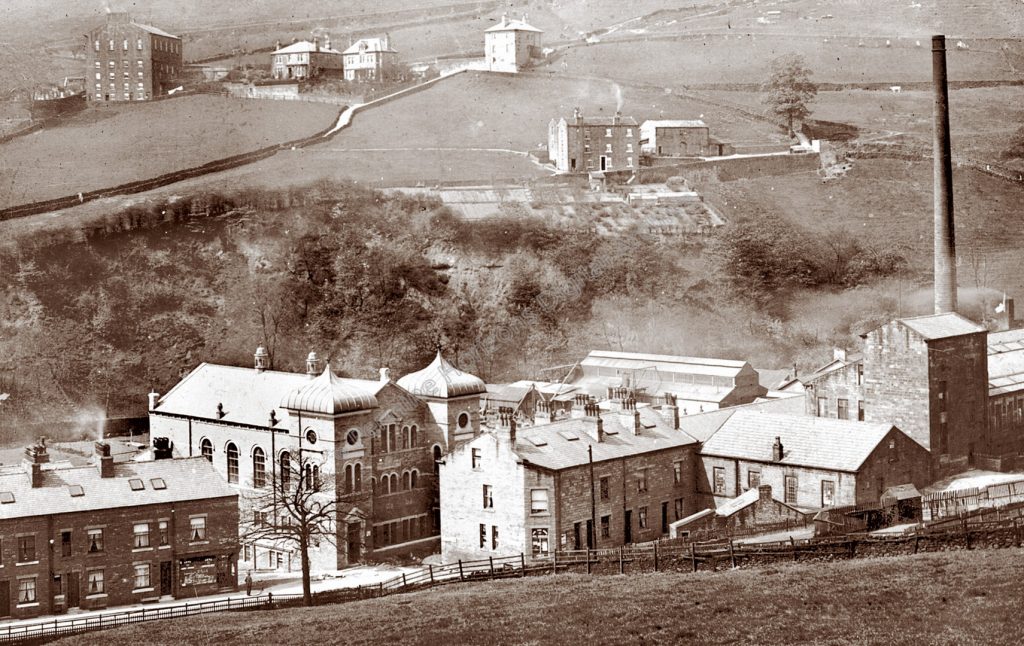
Circa 1900. Foster Mill, owned by Redman Bros, was part of the Hebden Estate Company. William Henry Cockroft designed the Methodist Chapel. Moss Lane on the hillside leads to Heptonstall Road. Top left is Cross Lanes Chapel with the Manse on the right. The group of houses, right of centre, is Slater Bank.
Both chapels and the mill all now demolished.
Foster Mill

The building over the bridge was the stables for the mill
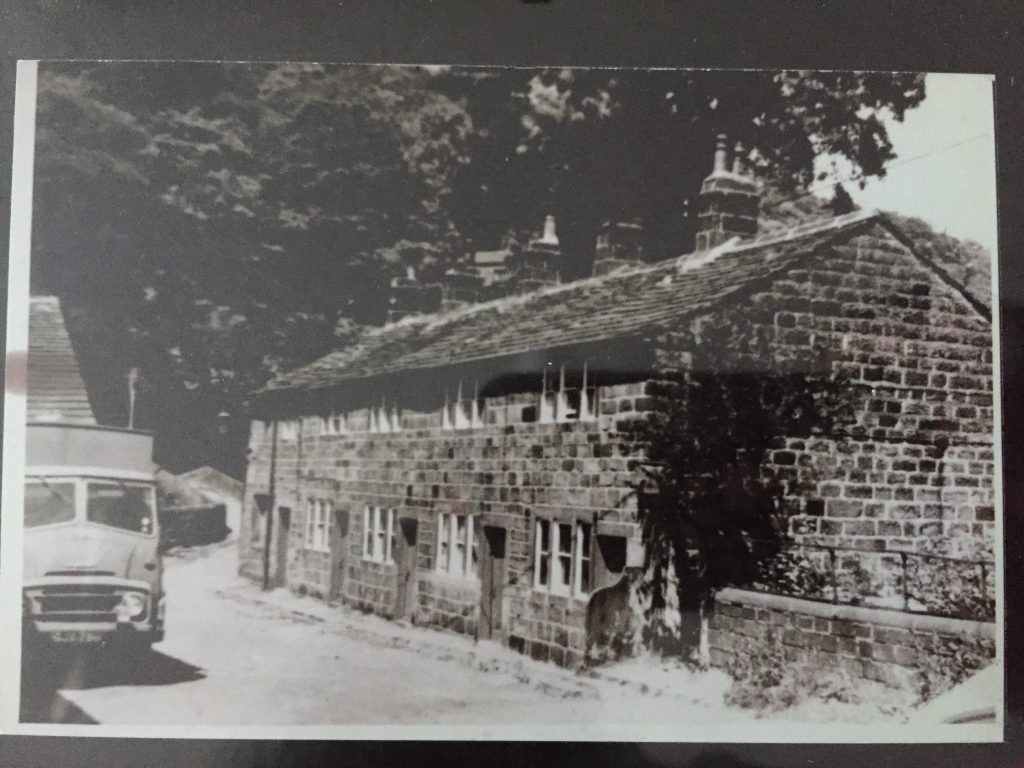
Photo of Foster mill cottages , and in the background the side of the stables and the bridge
Today, Dec 13, 2018, I’d planned to take a short stroll into Hardcastle Crags – mostly because it wasn’t raining and there was a hint of blue sky. I’d spent yesterday in the archives, the first time in 6 months. For the previous few days I’d been finding out interesting things from an interactive historic map of Calderdale and had come up with the idea of printing out a map and marking on all the houses in the area (basically the ones I could walk to from my apartment) that my ancestors had lived in, and those they had built. From this I’d discovered the whereabouts of Foster Mill. And wouldn’t you know it! It occupied the space on which a row of newish houses has been built, as far as I can tell the only new houses to have been built on flat land in Hebden Bridge since 1900. When Anna was here in May we’d gone to have a look at a house for sale on that very street – Spring Grove. Foster mill had been worked on extensively by my Wrigley builder ancestors. In 1842 the mill chimney had been plastered by Thos. Jas. & Geo Wrigley for Wilm & Jas Saga – 14.5 days work.
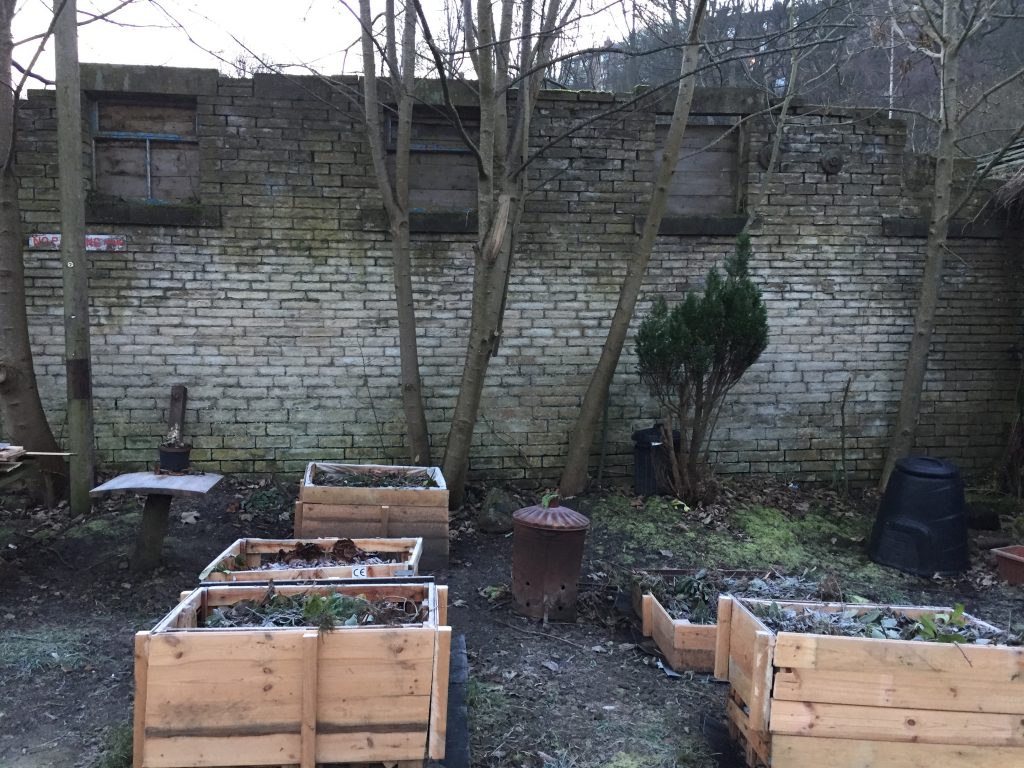 Bedding boxes form part of the Community garden. Was the building behind part of the Foster Mill complex?
Bedding boxes form part of the Community garden. Was the building behind part of the Foster Mill complex?
In 1890 they had rebuilt the mill after a devastating fire and in 1908 Foster Mill shed and cottages had been painted outside. Only two days ago I’d gone out after a storm and taken photos of an old building close to the site of Foster Mill and had chatted to a guy who uses it to house a car repair business. I’d remarked on the number of quirky decorations on the buildings close by – very Hebden Bridge. So today, outside this old building a man was planting some bedding plants in some waste ground. On impulse Iasked if he knew if the building had once been connected with Foster Mill. “Perhaps,” he said. “That very old on the left, just before the bridge was the stables for the mill.” I’d taken several photos of that building since I’d moved to the town, simply because it had some great doors with flaking paint – one of my specialities. “There used to be a row of cottage where we’re standing. I have a photo of them. Would you like to come in and see it?” and with that he led the way over to one of the houses on Spring Grove. The photo was framed and on display in his living room. One of my ancestors lived in a cottage at Foster Mill. I wondered if it could have been one of these. I commented on his piano, where music for a Chopin Nocturne and the obligatory Fur Elise were on the music stand. I mentioned that I teach piano and we exchange info with the possibility of him taking lessons. It turned out that we had met once before in that connection when I was looking for a space to teach piano!
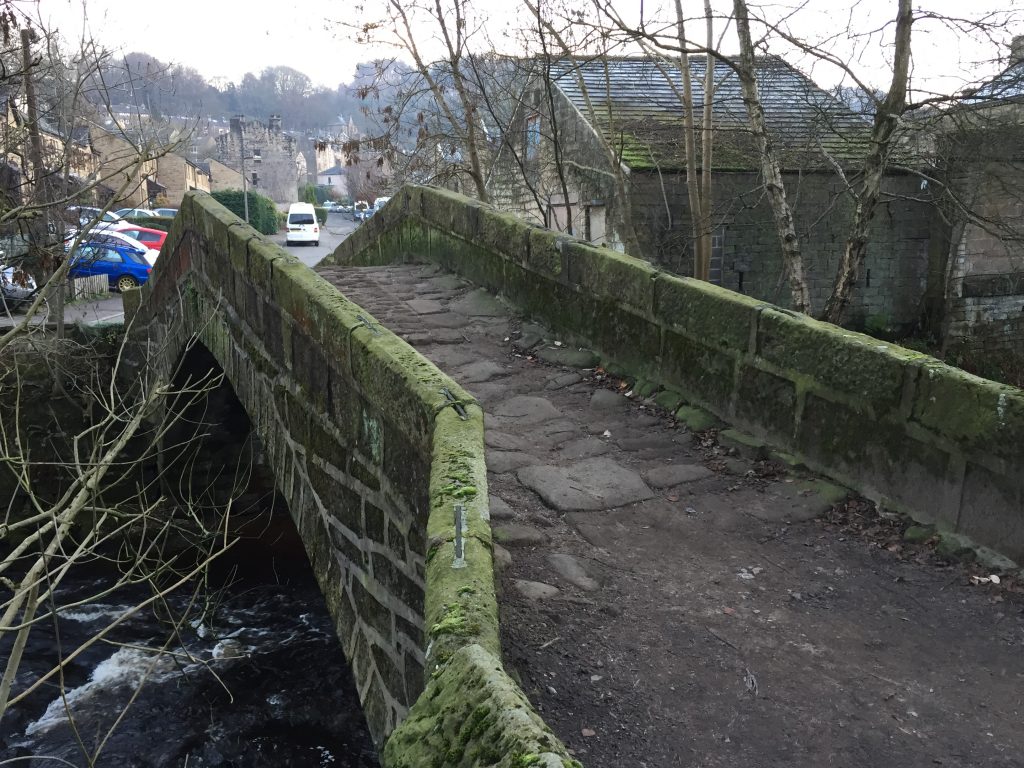
Foster Mill packhorse bridge built to connect Heptonstall to the fulling mill

From Malcolm Bull’s Calderdale companion:
Next to Hebden Vale Iron Works on Victoria Road / Foster Lane, Wadsworth.
There was a corn mill, then a fulling mill [in the 17th century]. Around 1808, it was converted to a worsted spinning mill. In 1851, it was described as 6-storeys and was driven by an iron waterwheel 36 ft in diameter and 14½ ft wide, a 23 hp engine, and a 16 hp engine. The mill was destroyed by fire on 1st December 1828, 14th December 1853, and 17th May 1888 In 1888, it was one of the largest cotton spinning mills in the valley. After the fire, the mill was rebuilt by Redman Brothers. On 27th April 1891, photographs of the neighbourhood were taken from the top of 168-foot high chimney by R. S. Blackburn. The day was dull and the negatives not very clear. The building was demolished in 1985. The base of the mill chimney is still visible.
I took my leave of Mr ____ and carried on, over the bridge, which only this week I discovered is named Foster Mill Bridge. It’s similar to Hebden Bridge being very very steep, narrow, cobbled and with very low parapets. This was because the horses that used these Pack horse bridges were laden with bolts of woven fabric which clear the height of the parapets. It was built in the 17th century
Today, now that I knew its precise location, I could clearly make out Dog Bottom house and even see the progress of the stone wall since chatting with the mason two days ago. My friendly blue heron was nowhere to be seen today but I did take notice of a sign that I must have passed before. Well, I’d read it before but since I didn’t recognise the names of the places the sign mentioned, or the lay of the land in the vicinity, it hadn’t meant anything to me. Today I understood it all – yeah! Just another day of feeling connected to the landscape.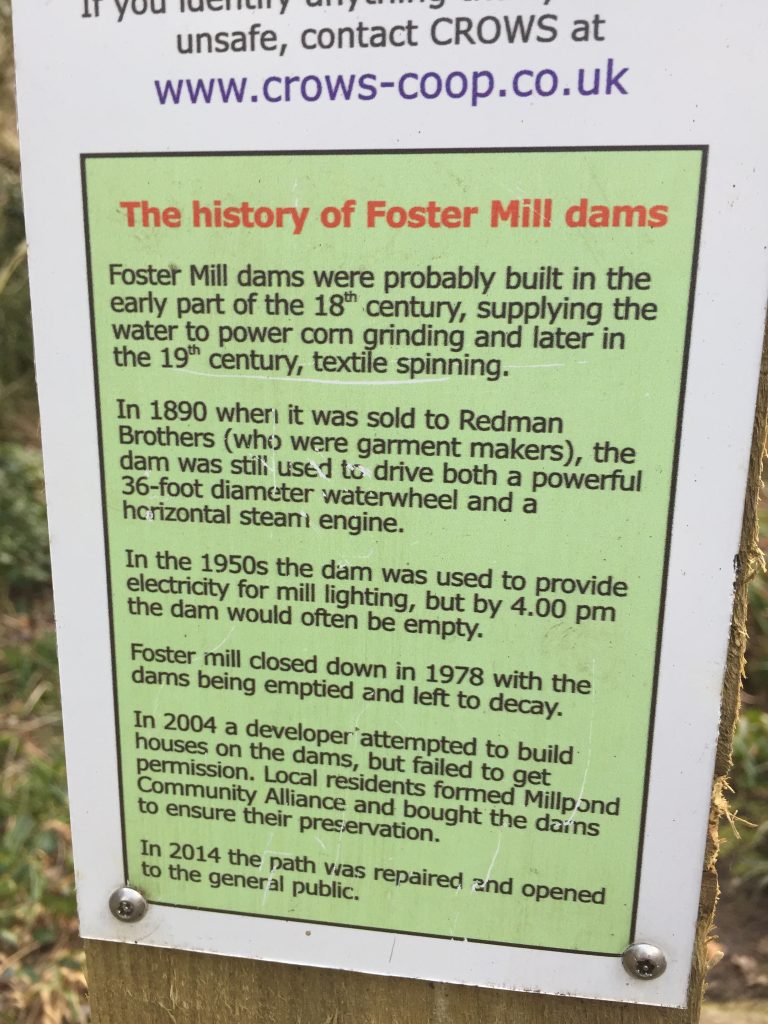

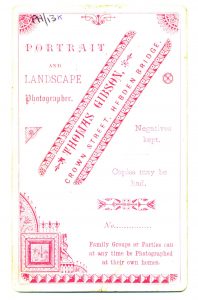
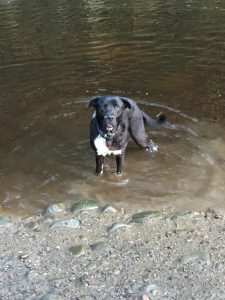
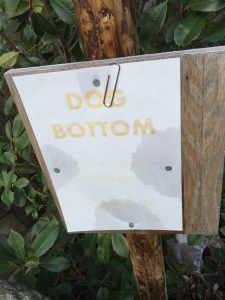
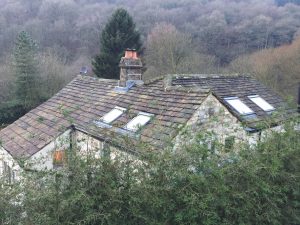
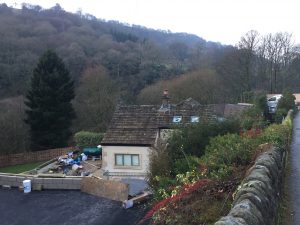



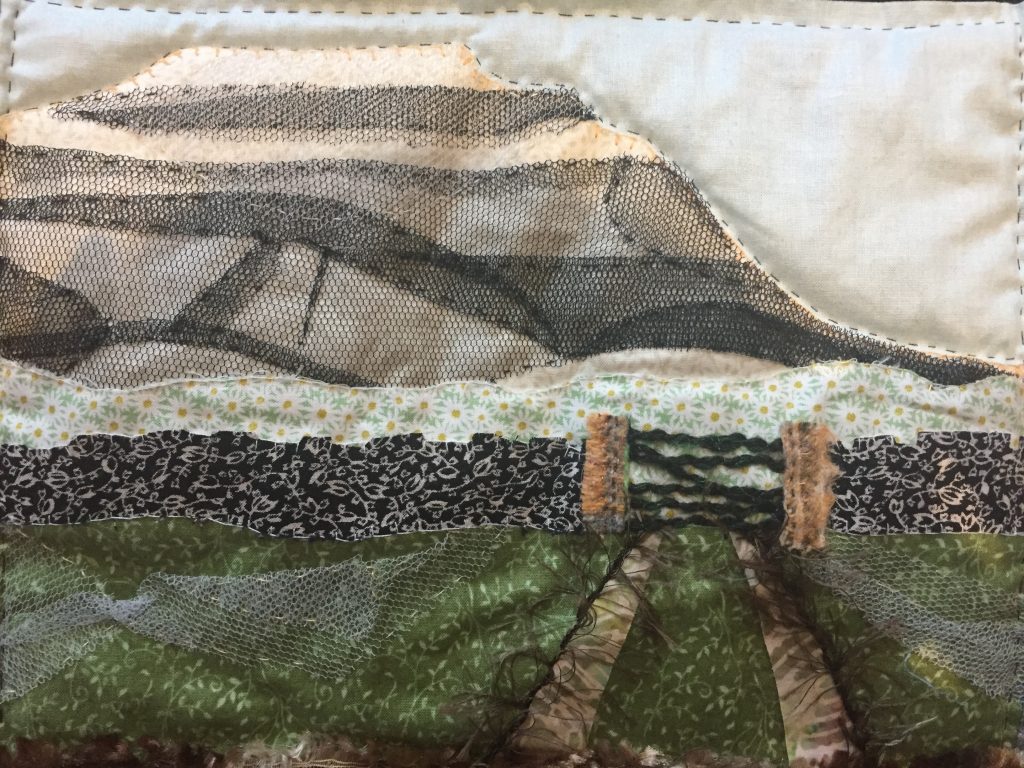
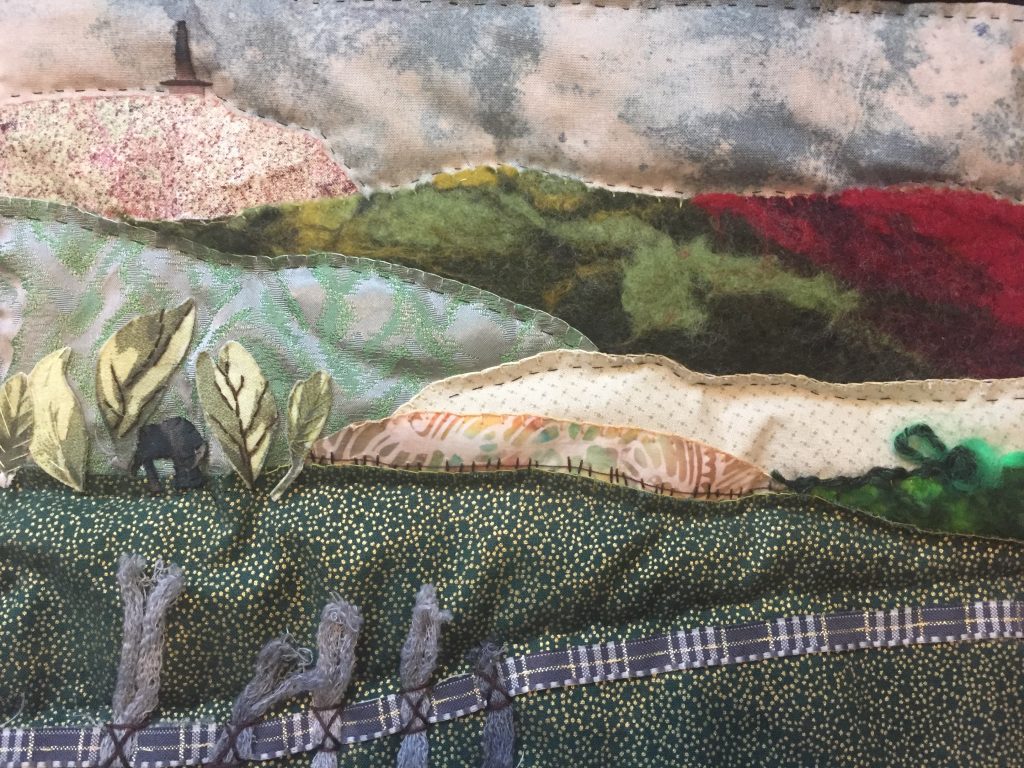

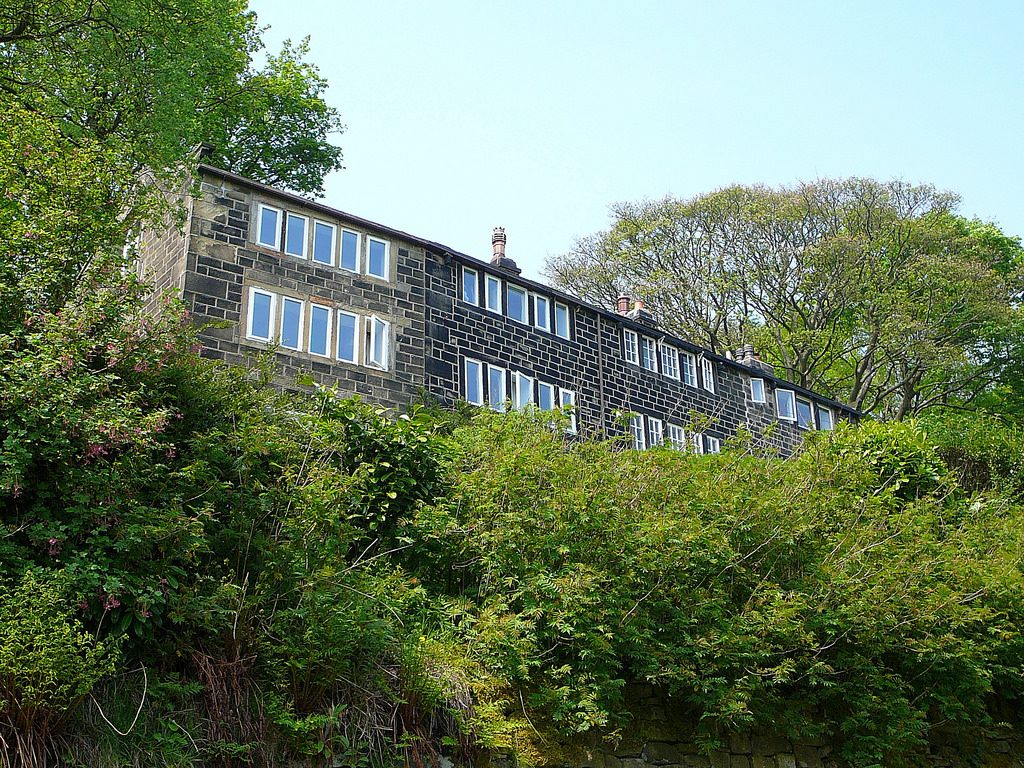
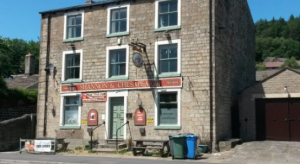
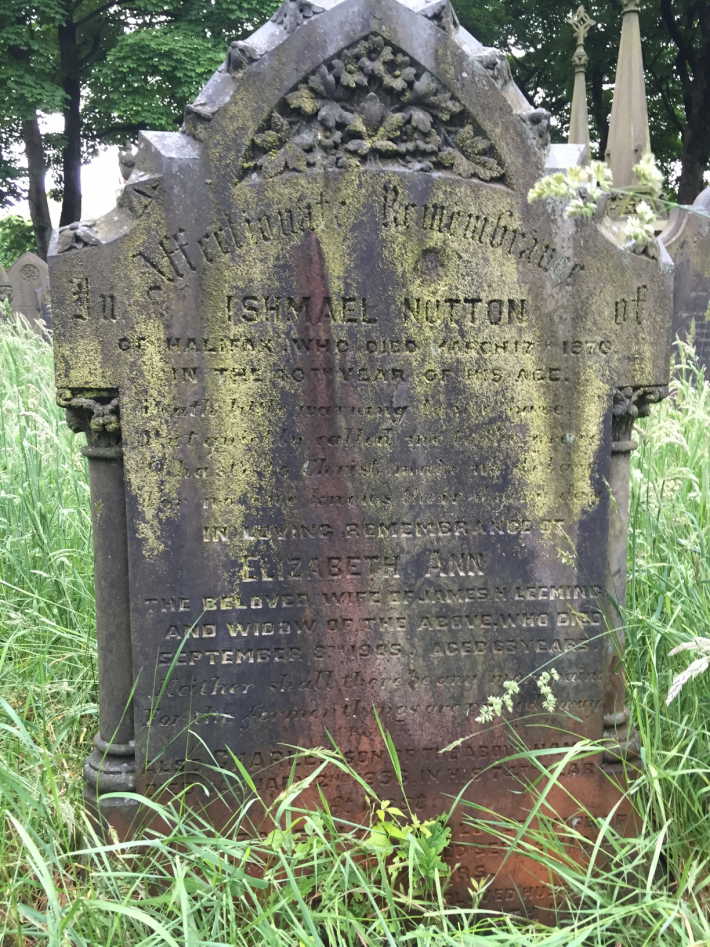 was now head of the household living at 20 Haigh Street, Halifax, with her sons Charles 18, John 17 and William 14. She also has a lodger, James Hainsworth Leeming, eleven years younger than her. In 2016 I went to find her house. Haigh Street is still there, partially, but as ill-luck would have it the part I wanted has been demolished. It’s a street sandwiched between factory buildings, many of them derelict. Five years later Elizabeth Ann married James Leeming, a widower, originally from Horton near Bradford. But here, things get a little more complicated because she gives the name of her father not as William Whitham but as James Wrigley, a plasterer. Try as I might I just couldn’t figure this out. She’d given two different names for fathers on her two marriages. The simplest explanation is that I’d got the ‘wrong’ Elizabeth Ann, but that didn’t seem likely since the birth years were about the same and they’d both been born in Heptonstall. Completely at a loss I just happened to find a person online offering to help with people’s ancestral brick walls in Calderdale. I emailed Roger Beasley of the CFHS one evening in August, giving details of my predicament and, lo and behold by the time I woke up the next morning he had solved my mystery. He wrote: “I think I may have worked out why Elizabeth Ann Whittham gave both William Whittham and James Wrigley as her father. Her mother, Sally Farrar, daughter of James Farrar, married William Whittham in 1822. Their children were: Hannah (b.1828), Farrar (b.1831), John (b.1833), James Farrar (b.1837). William Whittham died in 1837. In the 1841 census there was a James Rigley, plasterer, living next door to the widow, Sally. It seems possible that Elizabeth Ann Whittham was the illegitimate daughter of Sally Whittham and James (W)rigley. I couldn’t find a baptism for Elizabeth Ann Whittham which was common for children born out of wedlock. However, I did find the record of her birth in 1840 on FreeBMD.” Perhaps Elizabeth Ann herself wasn’t aware of her true father when she married for the first time. But Roger Beasley’s email also contained two other very important facts. I’d been unable to trace Elizabeth Ann’s mother. Roger found her to be Sally Farrar of Heptonstall. When I got the church records for St Thomas’s Heptonstall there are 190 Farrar baptisms recorded! Roger did find a birth record of Elizabeth Ann in 1840 on FreeBMD in which she’s registered in Todmorden. When her birth certificate arrived from England I found that, sure enough, as Roger had surmised there is no father named on it. Her mother’s name is Sally Whitham nee Farrar and Elizabeth Ann was born at Lily Hall. I can’t help wondering if James Wrigley and his wife knew that Sally was giving birth to James’s daughter literally in the next room – in Lily Hall.
was now head of the household living at 20 Haigh Street, Halifax, with her sons Charles 18, John 17 and William 14. She also has a lodger, James Hainsworth Leeming, eleven years younger than her. In 2016 I went to find her house. Haigh Street is still there, partially, but as ill-luck would have it the part I wanted has been demolished. It’s a street sandwiched between factory buildings, many of them derelict. Five years later Elizabeth Ann married James Leeming, a widower, originally from Horton near Bradford. But here, things get a little more complicated because she gives the name of her father not as William Whitham but as James Wrigley, a plasterer. Try as I might I just couldn’t figure this out. She’d given two different names for fathers on her two marriages. The simplest explanation is that I’d got the ‘wrong’ Elizabeth Ann, but that didn’t seem likely since the birth years were about the same and they’d both been born in Heptonstall. Completely at a loss I just happened to find a person online offering to help with people’s ancestral brick walls in Calderdale. I emailed Roger Beasley of the CFHS one evening in August, giving details of my predicament and, lo and behold by the time I woke up the next morning he had solved my mystery. He wrote: “I think I may have worked out why Elizabeth Ann Whittham gave both William Whittham and James Wrigley as her father. Her mother, Sally Farrar, daughter of James Farrar, married William Whittham in 1822. Their children were: Hannah (b.1828), Farrar (b.1831), John (b.1833), James Farrar (b.1837). William Whittham died in 1837. In the 1841 census there was a James Rigley, plasterer, living next door to the widow, Sally. It seems possible that Elizabeth Ann Whittham was the illegitimate daughter of Sally Whittham and James (W)rigley. I couldn’t find a baptism for Elizabeth Ann Whittham which was common for children born out of wedlock. However, I did find the record of her birth in 1840 on FreeBMD.” Perhaps Elizabeth Ann herself wasn’t aware of her true father when she married for the first time. But Roger Beasley’s email also contained two other very important facts. I’d been unable to trace Elizabeth Ann’s mother. Roger found her to be Sally Farrar of Heptonstall. When I got the church records for St Thomas’s Heptonstall there are 190 Farrar baptisms recorded! Roger did find a birth record of Elizabeth Ann in 1840 on FreeBMD in which she’s registered in Todmorden. When her birth certificate arrived from England I found that, sure enough, as Roger had surmised there is no father named on it. Her mother’s name is Sally Whitham nee Farrar and Elizabeth Ann was born at Lily Hall. I can’t help wondering if James Wrigley and his wife knew that Sally was giving birth to James’s daughter literally in the next room – in Lily Hall.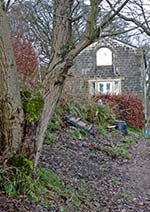
Recent Comments